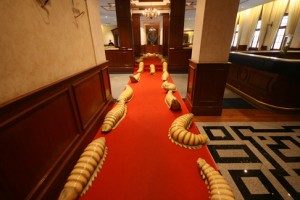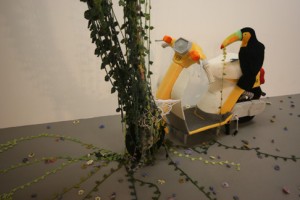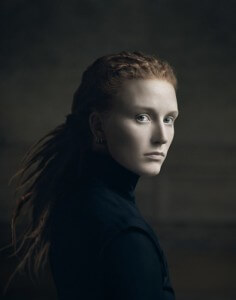
The 2nd Singapore Biennale 2008, which finished on 16th November, took ‘wonder’ as its theme this year. Following the success of the inaugural show in 2006 that included 95 artists and attracted over 883,000 visitors, this year was a more tightly curated affair with 66 artists and art collectives from more than 35 countries and regions – including an impressive smattering from Iran, Kyrgyzstan and Palestine. Spread over five venues, I was only able to visit one of the sites – City Hall.

This landmark building has been at the heart of Singapore both physically and politically since 1929. It was here that Admiral Mountbatten accepted the surrender of the Japanese in 1945, here that Singapore was proclaimed a city by Royal Charter in 1951, and it was here that Prime Minister Lee Kuan Yew declared Singapore an independent republic in 1965. The City Hall itself is slated to become the National Art Gallery in 2013. For the moment, giant maggots roam the corridors.

It was rather endearing to wander around the former courtrooms and legal chambers being my own judge of the artwork that now occupied these somewhat musty but historic spaces. Some of it was distinctly art-schoolish, and some of it was extremely accomplished. Here are my own, very personal, highlights.

The large, rather formal, wood-panelled Chamber Room complete with coat of arms was the location for Wit Pimkanchanapong’s Singapore, 2008 installation. As a metaphor for nation-building, it allowed visitors to place their own mark using messages on stickers on a wall-to-wall Google Earth satellite image of Singapore. One couldn’t help wondering how this free-form of interaction with the city would go down if it was genuinely turned translated into real-life action.

In another darkened room, a book floating in a tank kept constantly in motion by invisible currents presented a memorable image. In the incomprehensibly titled Bachelor – The Dual Body, the artist Ki-bong Rhee “wanted the dream-like image to be dominant over the meaning or material.” A pity then that the catalogue entry goes on about the book being Wittgenstein and that “perhaps it shows Europe, with its ideological history, is bewildered about the future,” and other such claptrap.

Lee Yong Deok’s I‘m Not Expensive uses relief plasterwork within what appears to be a flat painted scene to create a Mona Lisa effect – certain elements follow you wherever you going in the room, changing perspective as if they were 3D objects (which of course they are).

Sergio Prego’s Black Monday presents an event (the explosion of a flare and the resulting smoke cloud) recorded from a 360 degree array of cameras. The resulting images are stitched together and accompanied by a disorientating electronic soundtrack and projected in the very room that the explosion took place. It was almost like watching a weather system developing. I liked the fact that when I was there an older lady got it first time when she said “Ooh look it was filmed here”.

Amongst all this earnest endeavour, it was nice to come across some humour in the form of knitwear. Taiwan-born E Chen makes everyday objects (if you can call a Vespa and a Toucan “everyday”) from woollen yarn. The knitted ivy growing up a lamppost was particularly effective. It was hard to resist the urge to touch the exhibits.

And so back to where we started with Desiree Dolron’s hauntingly arresting photographic images, reminding us of the continuing power of portraiture amongst the bells and whistles of contemporary art.
The 2nd Singapore Biennale 2008 deserves to be a success and, whether or not it achieves its aims of making art part of people’s lives in the resolutely staid city-state, it cannot be faulted for trying.
